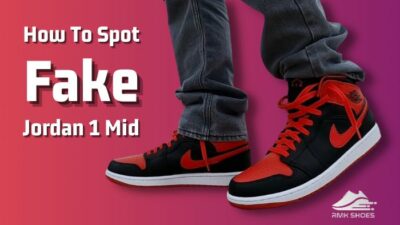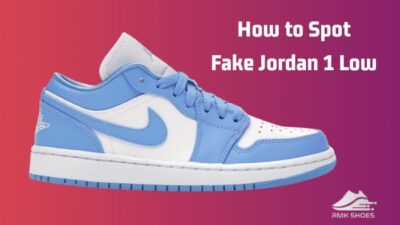Having flat feet is quite tough for everyone who has it, and the sad part is when you desire to run with your flat feet.
You are not, however, eliminated from the running squad.
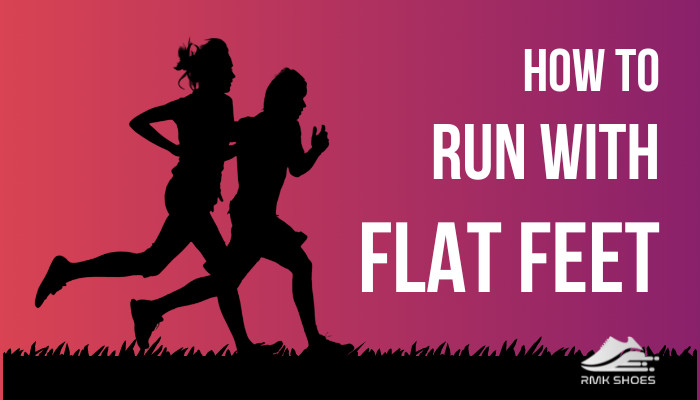
Due to my running passion, I searched and tried several pairs of running shoes to find the solution. And after a long struggle, I arrived at the best conclusions.
In this article, I’m gonna discuss my experience and crucial advice for keeping your flat feet safe when running.
Running with Flat Feet – 8 Tips to Know Before Running
Flat feet mean low arch support, which is mandatory in running. This does not imply that running with flat feet is impossible. And this occurs when the arch collapses, rolling inward with the ankle and exerting pressure on the knee, hip, and back.
Every flat-footed runner encounters it frequently, which is the most terrible situation.
However, many flat feet sprinters have lifetime running experience with minimal injuries. To achieve that, you must abide by basic guidelines that guarantee pain-free running sessions.
Here are the practical exercise tips for flat feet runners:
1. Buy a Stable Shoe for Running
Choosing a pair of running shoes that is flat-feet-friendly is quite difficult and the first step in sprinting with such foot condition.
Verify the environment and the location of where you will be running before picking the shoes. Stability running shoes offer mild to moderate overpronation, along with medial lateral arch support for flat feet people.
2. Maintain the health
Always staying fit and maintaining a healthy weight is a must for athletes. Because excessive body weight enhances the fracture tendency and the injury chances increase when you have flat feet.
Your body experiences more pressure during running, particularly in the musculoskeletal system.
Take a healthy nutritional diet before running if you are overweight, and it’s essential if you are flat-footed.
3. Measure your feet properly
You should measure your feet more often because flat feet change size quickly. Additionally, always try to purchase your shoe after proper measurement.
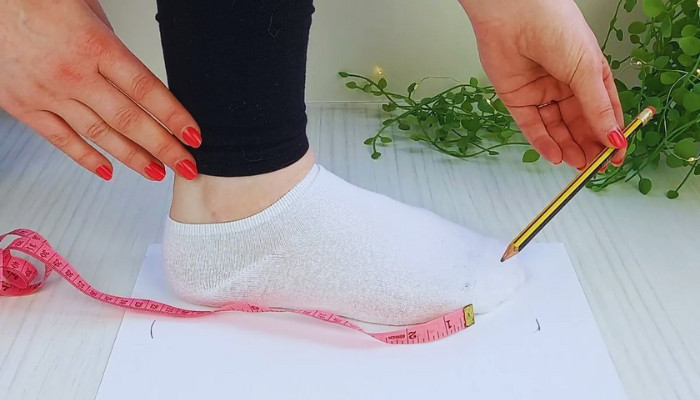
Running shoes come in various sizes and fittings from multiple companies. So, before purchasing any pair, knowing shoe size comparisons of different brands can help you to make a decision.
4. Practice with experts’ suggestion
Continue to comply with a routine workout program. Regular, sustained training lowers the risk of injury. Due to your flat feet, improper exercise could cause you to damage your lower limbs.
You must complete your training for constant strength during the running session.
5. Replace your running shoe
If you have multiple pairs of shoes, switch them before one gets worn out. Also, you should complete the breaking period properly. Wear your shoe in rotation as it helps to prevent accident tendencies.
6. Choose an even and soft place for running
Despite your extensive running experience, try to avoid running on uneven surfaces because you have flat foot issues that provide less arch support.
The injury pronation might be increased and offer a severe abrasion on an uneven and rough trail. Long-term running on soft land like sand fields decreased pronation and raised calves’ activation.
Additionally, a squishy surface enhances side-to-side pelvic stability, which increases the gluteus medius’s level of activity.
7. Additional strength and support
Build additional strength in your hips, back, and knees to run more steadily. For more support, you might wear some supportive orthotics insoles.
There are numerous socks and insoles available as well that can provide support for flat feet. Additionally, wearing different types of socks when sprinting is well for foot health. So, If you want additional comfort, wear socks with your spikes.
Wear an ankle brace if you face some inflammation in tendons. Take all the precautions you can to avoid the worst.
8. Don’t neglect the pain
Never run through bruises and ankle pain. It usually causes more discomfort, and you risk losing your running ability. Take more time to heal fully.
These are the more valuable tips for you if you’re planning to run with flat feet. Never ignore your feet, and give your flat feet extra attention.
All you have to do is understand how to do it, and you will become a successful runner with flat feet in no time.
What are Flat Feet & What Causes Them?
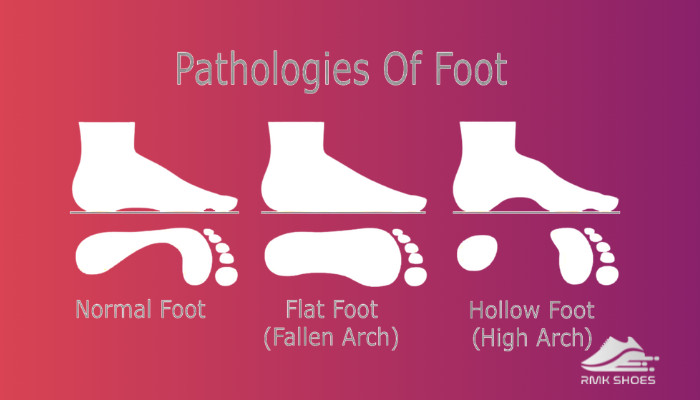
Flat feet, also known as pes planus, indicate a type of foot that has an almost nonexistent mediolateral arch.
Arches are the more flexible and supportive part of the human body, offering excellent shock absorption capability during running. On top of that, It evenly distributes your body’s weight across your feet.
Flat feet are a common foot condition that affects about 27% of the population, including the runner’s community.
According to repeated studies by experts, family heredity is the primary cause of flat feet in people. Family genetics, thus, is the real culprit because the child inherits the structure from birth.
However, experts say some people get flat feet later in life. It may be due to problems including injuries to the ankle, obesity, arthritis, muscular disorder, pregnancy, or aging.
If you have confusion about your feet and their activities, a podiatrist can confirm whether you have flat feet.
On top of that, You can perform a wet test at home, where you must imprint a foot with any liquid. If you can see a hole in the middle of your foot bed, you have standard feet; if not, you regrettably have flat feet.
Types of Flat Feet
Before sprinting with flat feet, know which type of flat feet you carry.
Yes, rigid and flexible flat feet are the two forms of flat feet. During a run, each foot type reveals a different character.
Rigid Flat Feet: With this type of foot structure, your foot is flat in all postures; whether you bear heavy weight or not, you can’t find any noticeable arch support.
Flexible Flat Feet: When you are not carrying any weight, such as sitting or lying down, you notice a slight wave in your footbed. But after applying more weight and pressure, the footbed flattens, and the wave disappears.
Challenges of Running With Flat Feet
Many flat feet runners experience strain and swelling from overpronation. The flat feet are not just a variation of structural norms; it’s the anatomical foot structure. Unfortunately, this deviation affects your feet during running.
The pain is not only for your leg, but you also suffer from knee, thigh, and lower back pain. After a long run, you also find some soreness in your leg.
Usually, normal foot arches act like a psychological spring mechanism that offers a stable landing scope over running. The built-in mechanism also provides a flattened landing, reducing the impact of pressure.
Flat feet sprinters are also vulnerable to inflammation of tendons in the knee and ankle joints.
Additionally, the regular wear and tear tendencies lead to ligament rupture.
You might feel acute pain in your shin while running on a hard surface. Shin pain is quite common for flat-footed runners.
Regular running may invite bunions in your leg, which you find in joint bumps and typically joints of big toes. If you go through a bunion and calluses problem, you must know how difficult they are.
But you can prevent most of them by maintaining some precautions. If you understand your feet’ condition and how they react in different situations, you can minimize the pain quickly.
How to Keep Running After All Challenges?
As I have already said, running on flat feet is quite complicated, but that doesn’t mean you change your passion.
So, don’t give up on your passion, just follow some quick tips that always help flat feet runners. Your running shoe is crucial equipment and remember prevention is better than cure.
An ideal running shoe not offer only comfort and support, but also provides a stable and flexible seat for your feet.
A well-designed runner shoe also controls motion, which is essential for flat-footed sprinters.

Experts suggest some customized orthotics insoles, according to feet type, structure, and severity which determine your feet’ complications. The special orthotic inserts offer you more support and motion control facilities.
After all these criteria, for better performance, you can follow some distinctive suggestion that helps to reduce your pain during running with flat feet.
Here are the ideas for reducing the aftereffect:
- Before a long run, you must do some light exercise like jogging, butt kicks, and lunges which are known as warm-up motions. These little jogging minimize your body inertia and gives flexibility.
- Choose soft and flexible terrains. The sand field and flat dirt trails are the better option, and try to avert the concrete field and roads.
- Regular exercise and workouts are important. You must enhance your target, by at least 10% in a week.
- Initially, try to work with a podiatrist. First, you need to diagnose your feet regularly, a little ignorance provides a miserable injury.
Parting Thoughts
Running is difficult with flat feet, and it leads to several injuries like tendon inflammation, ankle pain, shin pain, etc.
For your convenience, I have shared helpful advice that can ease your running with flat feet. Each and every tip works differently according to your foot condition.
Let me know which part is helpful for you, and for further queries, comment below.

